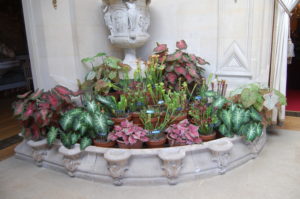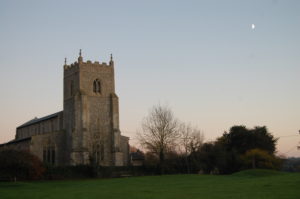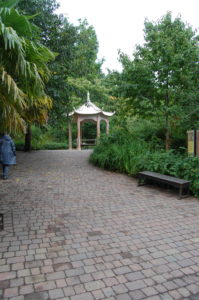Stanley Spencer was an idiosyncratic artist who could be awkward and sentimental, yet in his deeply felt memorial for a friend and his Great War comrades he attained a symbolic expression to stand beside national memorials.
His war service began as a hospital orderly and his work in the chapel follows this course, with a lorry bringing wounded soldiers through the hospital gates. Details of their initial treatment follow along the north wall before, on the south, his experiences in the Balkan campaign show why he felt the need to commemorate. Dominating everything is a huge resurrection, in which the soldiers rise from graves and present the white robed figure of Jesus with their crosses.
Although photography is not possible in the chapel because the paintings are not owned by the National Trust, images can be viewed on line. There is an impersonal character in the figures, mainly masculine as this is a war memorial although the few females (nurses) could be images of Mary, which gives them universality. In this Spencer departs from his model, which was the Giotto masterpiece in the Scrovegni chapel in Padua, because his task was not to register the devotion of his patron but the sacrifice of his friend and comrades.
The chapel was specially built for the purpose and is still used for occasional services. As well as the paintings, a study centre places the Balkan campaign in context and shows a film comprising documentary footage and modern location images together with illustrative maps. The campaign was every bit as grim as the Western Front, with viciously cold winters and malarial summers. It was brought to a successful conclusion just before the western Armistice of November 1918.
Visitors will find a small car park across the road before they enter the gate beside an oak tree, one of two planted to commemorate Spencer. The second is now a stump covered by ivy, almost a memorial in itself. An orchard in a wild flower meadow leads to the main door, although the National Trust entrance is at the back of the building. The rear garden is carefully tended to allow reflection. It was also, when we visited, used by the local art society for exhibiting sculpture.
The chapel is open every day, apart from Monday and Tuesday, between late February and late October, and on Fridays, Saturdays and Sundays in November and December. Advice is to check whether a service or other event is taking place, in case the chapel is closed. The nearest town is Newbury, from where local buses run through Burghclere.










